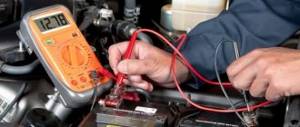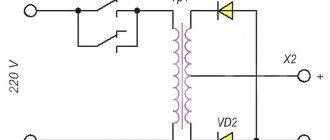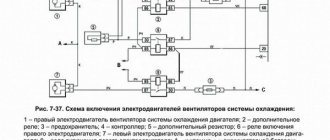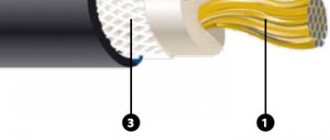This article will talk about how to care for car batteries. Many drivers do not attach due importance to battery care, and as a result, they experience such troubles as a decrease in battery capacity and a shortened service life, up to irreversible damage.
Car battery care becomes especially important during the winter season. If this matter is handled poorly in winter, then a car can actually become a useless piece of metal from a means of transportation that cannot be started.
It is in winter that unpleasant things happen, such as being late for an important business meeting or work due to a damaged battery. But the root of the evil lies on the surface - the driver did not attach due importance to caring for the battery in winter. If you take care of it properly throughout the year, the battery can work quite effectively for at least 7 years.
Therefore, it makes sense to once again emphasize the following - if the battery is cared for regularly, then it will serve for a long time and without failure. Otherwise, you only have yourself to blame. In 90% of cases, it is the battery that determines whether the car will start or not.
What types of batteries are there?
Serviced
Batteries of this type have so-called filler plugs. These plugs are used to control the density of the electrolyte, as well as to check the current level. If you care for a car battery of this type skillfully and regularly, it can serve without fail for quite a long time. However, every year the production of batteries from this group is constantly declining.
Out of service
These batteries do not require continuous monitoring of the electrolyte level and its maintenance as it is consumed. Features of this group of batteries include the presence of a special valve for removing gases and the possibility of periodic recharging. The majority of batteries available on the market today belong to this group.
In winter, many car owners begin to seriously “torment” batteries in order to start the engine of their car. However, the battery is not always the reason why a car won't start. This depends on a number of other factors, such as the quality of engine oil, gasoline, the condition of the glow plug, etc. Therefore, first it is better to find out the reason for the stubbornness of the “car”, and not to continue to drive the battery.
Battery care
The frequency of maintenance depends on the type of battery:
- Maintenance free. They do not require special care; after 5-7 years of operation they are replaced with new ones.
- Served. The car owner will need a number of actions to maintain the functionality of such a battery (checking the density, adding electrolyte). Batteries of this type are gradually leaving the market.
Regardless of the type of battery, there are a number of general rules that will help extend its service life.
- It is necessary to regularly monitor the battery charge level. A voltmeter is used for this purpose. When using it, be sure to turn off the engine. If the voltage drops below the recommended values, it is necessary to recharge the battery.
- If the vehicle is not used for a long time (for example, in winter), the battery must be removed and stored in a heated room.
- Every few months it is necessary to check the reliability of the terminals. During inspection, the clamps should be additionally tightened. Sometimes it is necessary to clean the terminals with a special product.
Keeping it clean
The surface of the battery must always be clean and this must be carefully monitored. Pay attention to the terminals - they should not be covered with a layer of dirt or an oxide film.
If a battery is used for a long time, its terminals very often become oxidized. The resulting plaque has a high ohmic resistance and is a poor conductor of electric current. For this reason, it should be cleaned using sandpaper and ammonia.
Also, in batteries of a non-maintenance type, the gas outlet hole is often clogged. If this is discovered during visual inspection, then the hole needs to be cleaned. Otherwise, the accumulated gases will damage the battery case.
Car battery care
It's worth starting with the simplest. Dirt and dust, accumulations of oils and electrolytes that will inevitably appear on the battery during its use must be removed, since they are an excellent conductor of electric current. If this is not done, then the level of self-discharge of the battery will gradually increase greatly. Just keep the surface of the battery clean and pay attention to it every time you wash your car.
To clean the battery yourself, you will need a solution of regular baking soda. The proportion is very simple - one teaspoon per glass of clean water. After this, the surface of the battery will need to be wiped - this simple manipulation will effectively clean the battery.
However, you should not resort to untested methods. So, some car owners wrap the battery in plastic and believe that this way they can keep it clean and tidy for longer. On the one hand, this is true, but it is still not recommended to use a battery covered with film. Firstly, the presence of polyethylene will seriously complicate battery maintenance. Secondly, it can block the ventilation slots, which will lead to an increase in pressure inside the battery, but this is already very dangerous. In addition, electrolyte and dust will still accumulate under the film and you will still have to wipe the battery with soda solution, although somewhat less frequently. If you really don’t want to crawl under the hood with a rag very often, you can try purchasing a special protective case for the battery, which you can easily find in any car store. Craftsmen can make it themselves - this will require the most basic cutting and sewing skills. The case will help not only protect the battery from dirt, but also from hypothermia in winter.
The battery needs to be cleaned quite often. The most ideal option is if you do this every time you look under the hood to, for example, check the engine oil or the electrolyte level in the battery. By the way, it is extremely important to check the electrolyte level, especially in the summer, since it evaporates more due to the increased temperature. Checking the electrolyte level can be done very simply: to do this, unscrew the caps on the battery, after which you can measure the level with a glass or plastic tube, since these materials do not react with the electrolyte. An acceptable level is 1-.15 cm above the plates. Operating a battery with exposed plates is strictly prohibited.
Maintenance and charging
The first thing worth talking about is how dry-discharged batteries should be used. Despite the fact that such batteries are almost never found in modern car dealerships (batteries are sold ready for use and filled with electrolyte), it is necessary to have an idea about this, since exceptions do occur.
It all starts with the fact that you need to fill the battery with electrolyte. To do this, open the battery cans and fill in the electrolyte (it is usually supplied in the kit). Pour gradually until the electrolyte level exceeds the position of the plates by 10-15 mm (there are special cut-offs on the battery body). After this, the battery should stand for about a quarter of an hour. After this time, measure the electrolyte level again; if it has dropped, add it again to the desired level. Close the covers and carefully remove drops of electrolyte from the surface of the battery, then install the battery on the car. That's it, the battery is ready for use.
Today, most car stores sell batteries that are already filled and charged, so they can be installed in the car immediately after purchase. However, there may be times when you still need to charge, but this is no problem. Check the electrolyte level; if it is too low, add distilled water to raise it.
You need to charge the battery after you have removed it from the car (although there are ways to recharge without removing it). For charging, use a current with a constant voltage or current value. The first option is perfect for routine recharging of a slightly weak battery. Direct current charges batteries that are completely discharged. Charging must be carried out under your watchful supervision and will take quite a long time.
A multimeter is used to measure the voltage at the battery terminals. An acceptable value is 12 Volts; if it is lower, you need to slightly recharge the battery with constant voltage current - this mode is present in all chargers that are most actively used. Also important is the density of the electrolyte, which should be 1.27-1.29 grams per cubic centimeter. It can be measured with a special device called a hydrometer. It can be bought at any car store, it is quite inexpensive, and every car owner needs to have it. In general, working with electrolyte is a separate topic for conversation; on the Internet you can find a lot of articles where experts share useful tips and information with you. After charging, the battery is ready for use. Charge the battery on time and operate it in compliance with the general rules and specific recommendations of the manufacturer, in this case, it will last you longer, and you will be insured against unpleasant situations with a dead battery, especially in winter.
Fixing the terminals
The battery terminals should always be securely secured. If they are not clamped well, then when overcoming some bump, the battery may become disconnected and the car will simply stall.
This is an extremely dangerous situation that leads to a number of other troubles. For example, deterioration in brake performance or steering wheel locking. If this happens while driving, an uncontrolled or poorly controlled vehicle can cause a serious accident. Therefore, before the trip, it is highly advisable to verify the quality of the terminals.
Electrolyte check
If the battery is serviceable, then the car owner can easily control the electrolyte filling. If the level has decreased to a critical level, then the efficiency of the battery decreases significantly. Especially in cold winter.
What to do if the volume of electrolyte has decreased significantly? Then you need to top up the battery with distilled water. But there is one caveat here - when topping up the battery with distilled water, its charging time will increase noticeably. Also, do not fill the battery with more liquid than necessary.
How to charge a car battery - general rules
If the battery is deeply discharged, it must be restored using a charger. The range of modern car battery chargers these days is quite wide. If we talk about spending, then the best option would be to buy a charger at average prices.
It makes sense to consider in a little more detail how this is done correctly.
- In winter, you need to remove the battery from the car and move it to a warm room and let it warm up to room temperature.
- It is strictly not recommended to charge in the living room. Electrolyte vapors are dangerous to human health. This should be done in a ventilated and warm room. As a last resort, on the balcony in dry, not frosty weather.
- Avoid the presence of children and animals in the room where the battery is charging to avoid electric shock.
- Clean the terminals from dirt and grease, and completely wipe the battery with a dry cloth.
- If it is serviceable, then carefully unscrew all the caps from the electrolyte cans with a wide flat screwdriver.
- Carefully connect the battery to the charger. There is a whole variety of them, so each has its own charging principle. Be sure to read the instructions! Before plugging the charger into the network, it is better not to be lazy and check the instructions again.
- It is highly advisable to visually monitor the entire charging process. If you need to leave, then no longer than 5-10 minutes.
- When the battery is charged, the automation itself will disconnect the charger from the power supply. If your charger does not provide this, then you need to regularly monitor the process.
- When mechanically disconnecting the battery from the charger, you should first disconnect the minus terminal.
The procedure is, in principle, simple, and requires not so much experience and knowledge as attentiveness and caution. There is no need to call specialists to charge the battery; you can do everything yourself.
How to properly store a battery in winter?
It often happens that a car owner practically does not use his “iron horse” in winter. If you do the same, then do not neglect the most important rule of caring for your battery in winter - remove it from the car and store it in a heated room with a low humidity percentage.
If the battery is exposed to air with sub-zero temperatures for a long time, then all its important technical characteristics will certainly suffer.
The battery will begin to hold a charge poorly or will be completely discharged. This often causes complete failure of the battery.
But even in storage mode, the battery needs to be recharged periodically. This should be done at least once every three months. This measure will ensure that all battery performance characteristics are maintained at the proper level.
How to care for your battery in summer?
In the last article we looked at the question of how destructive heat is to batteries. Continuing the topic, we recommend that you familiarize yourself with practical tips on how to care for your battery in the summer.
You already know that summer is a difficult period for the “health” of the battery.
Car batteries in Nizhny Novgorod, Moscow, Vladivostok and any other Russian city are subject to no less stress in the summer than in the winter months.
Increased humidity from rain combined with high external temperatures, excessive dry air during hot days can be destructive and lead to premature battery failure.
The following are some basic practical tips for caring for your battery in the summer:
- Monitor the external condition of the battery.
The engine compartment of a car quickly becomes dirty due to the large amount of dust on the road. Dust particles settle on the outer casing of the battery and can lead to oxidation of the terminals and contribute to self-discharge of the battery.
- Do not leave the battery discharged
If for some reason the battery is discharged, and you, for example, went on vacation for several days, then you need to return the battery to working condition before the trip. At elevated external temperatures, there is a risk that during idle time in a discharged state, the electrolyte will evaporate, the plates will undergo sulfation, and it will no longer be possible to “revive” the battery.
- Make sure the electrical is working properly
Any additional equipment installed on the vehicle puts additional stress on the battery. That is why any malfunctions in the electrical network can lead to battery malfunctions, undercharging or rapid self-discharge.
At each visit to the service station, try to check the voltage and proper operation of all devices.
- Monitor your electrolyte levels
The electrolyte level is directly related to the “health” of the battery plates. If there is a lack of it, the plates may “boil”.
The type of battery being serviced must be topped up with distilled water.
You can buy a battery in Nizhny Novgorod for a car, motorcycle and any other type of equipment on our official website or in one of the retail stores.
All products presented in the catalog on the website can also be purchased in one of our stores or ordered with delivery to any place convenient for you within Nizhny Novgorod.
Store addresses:
- Nizhny Novgorod, st. Berezovskaya, 96a
- Nizhny Novgorod, st. Delovaya, 7, building 5
- Nizhny Novgorod, Kirova Avenue, 12
You can ask any questions to one of our specialists by calling our hotline.











